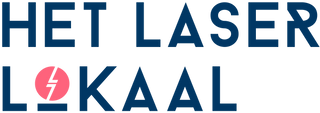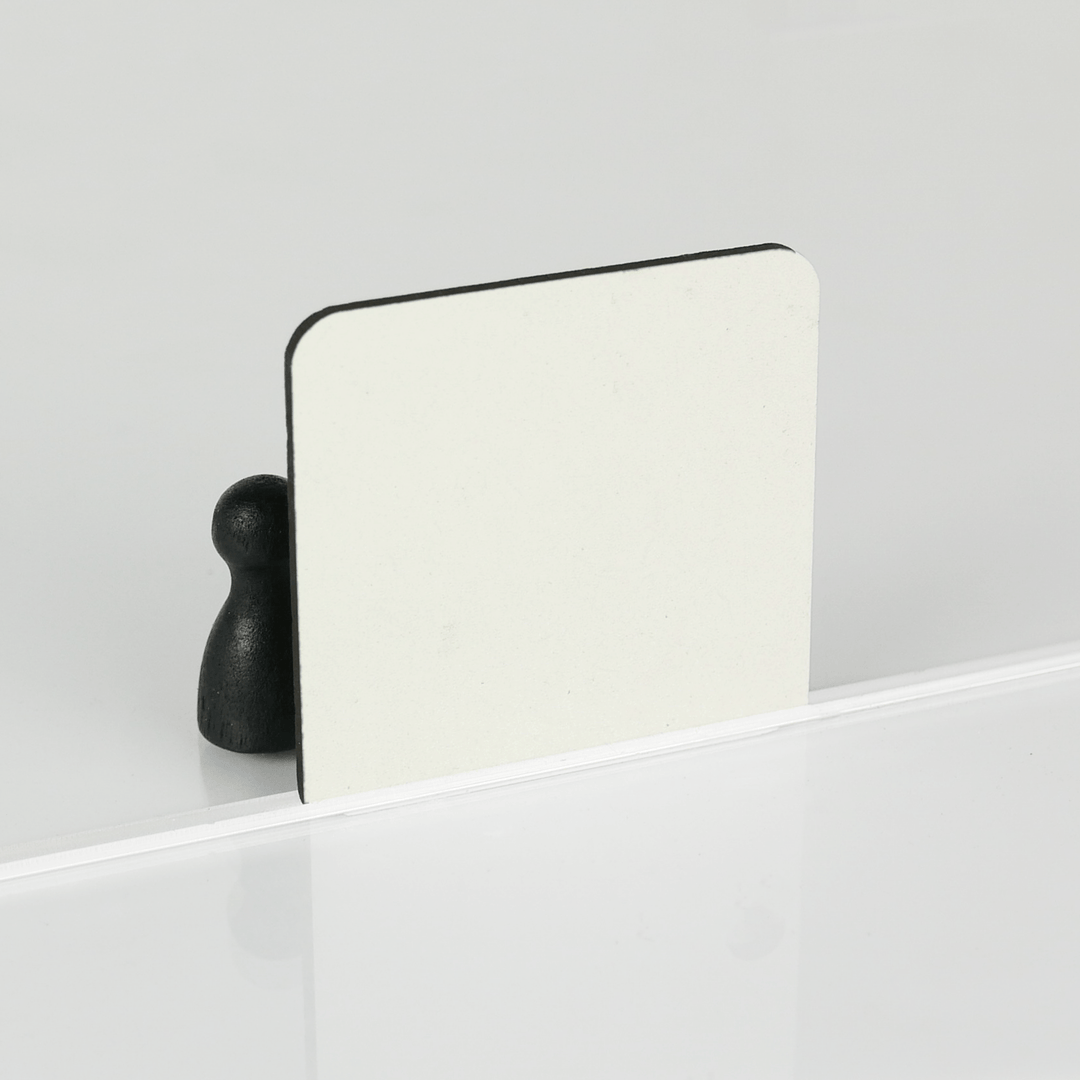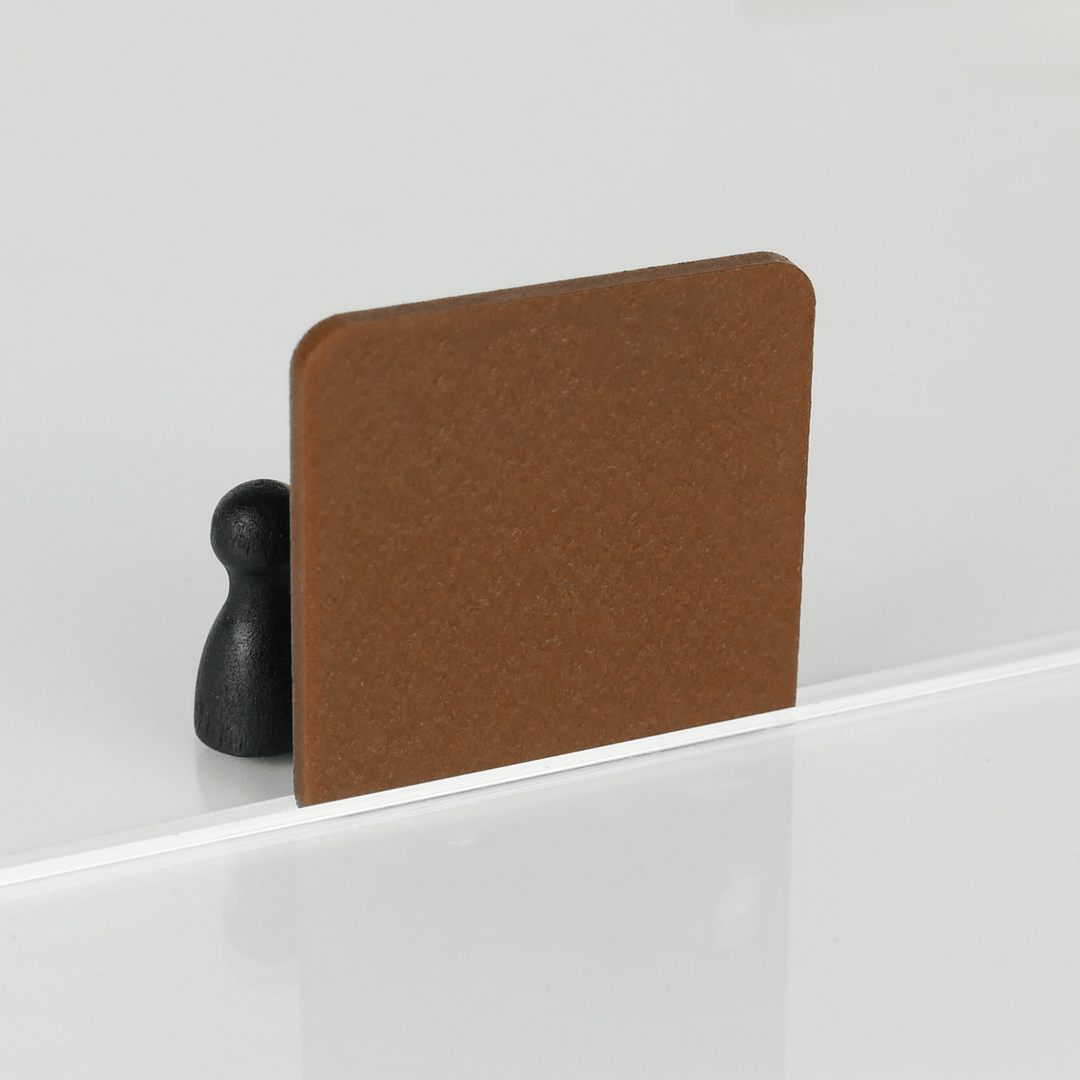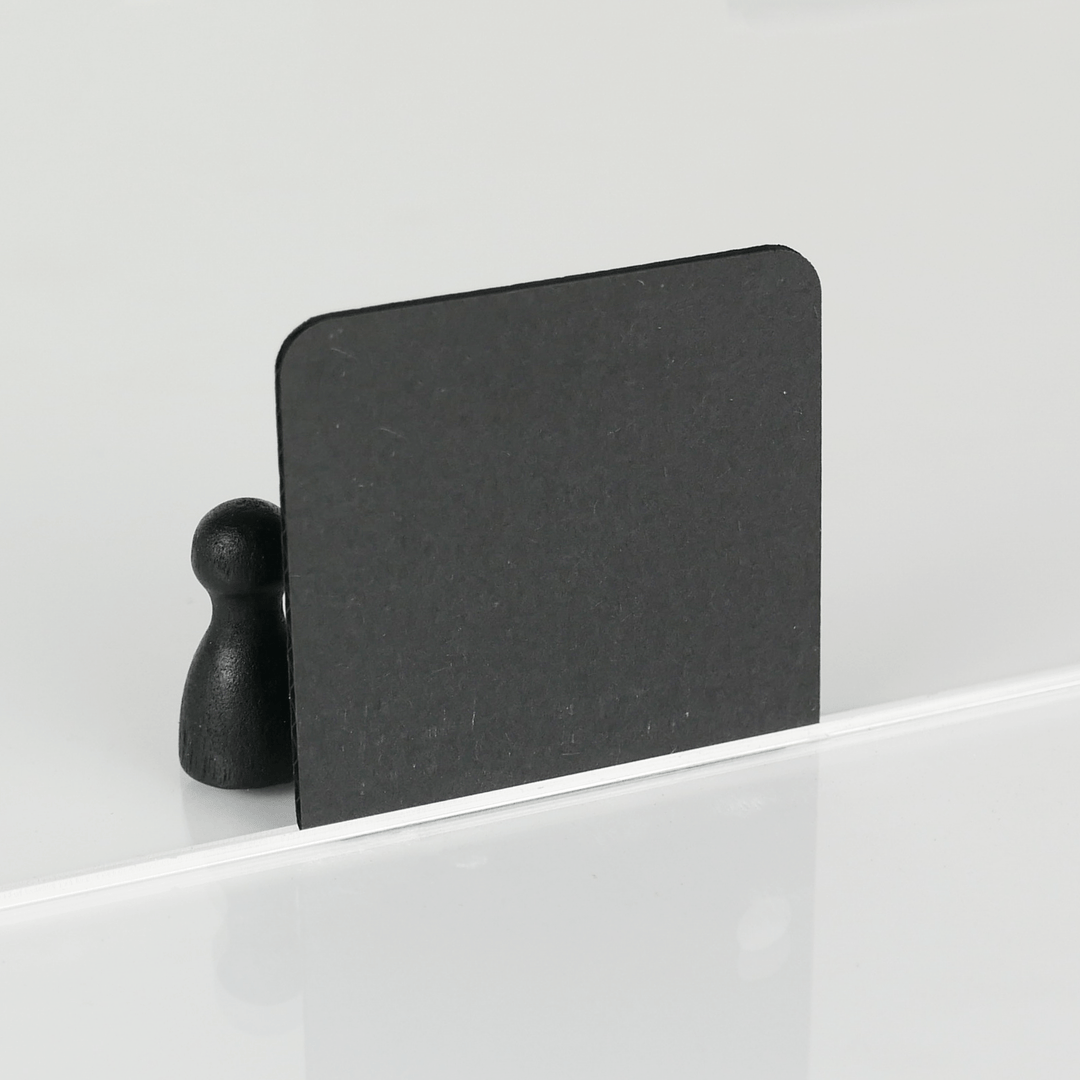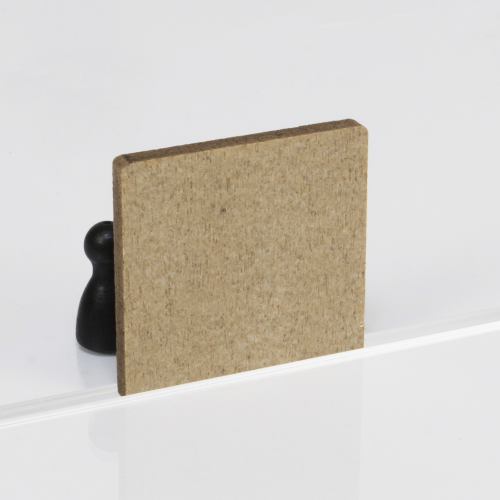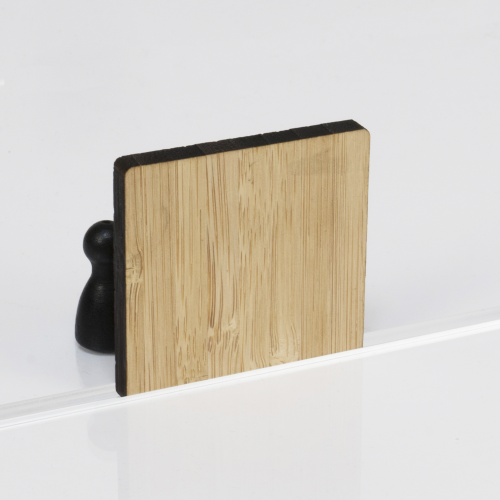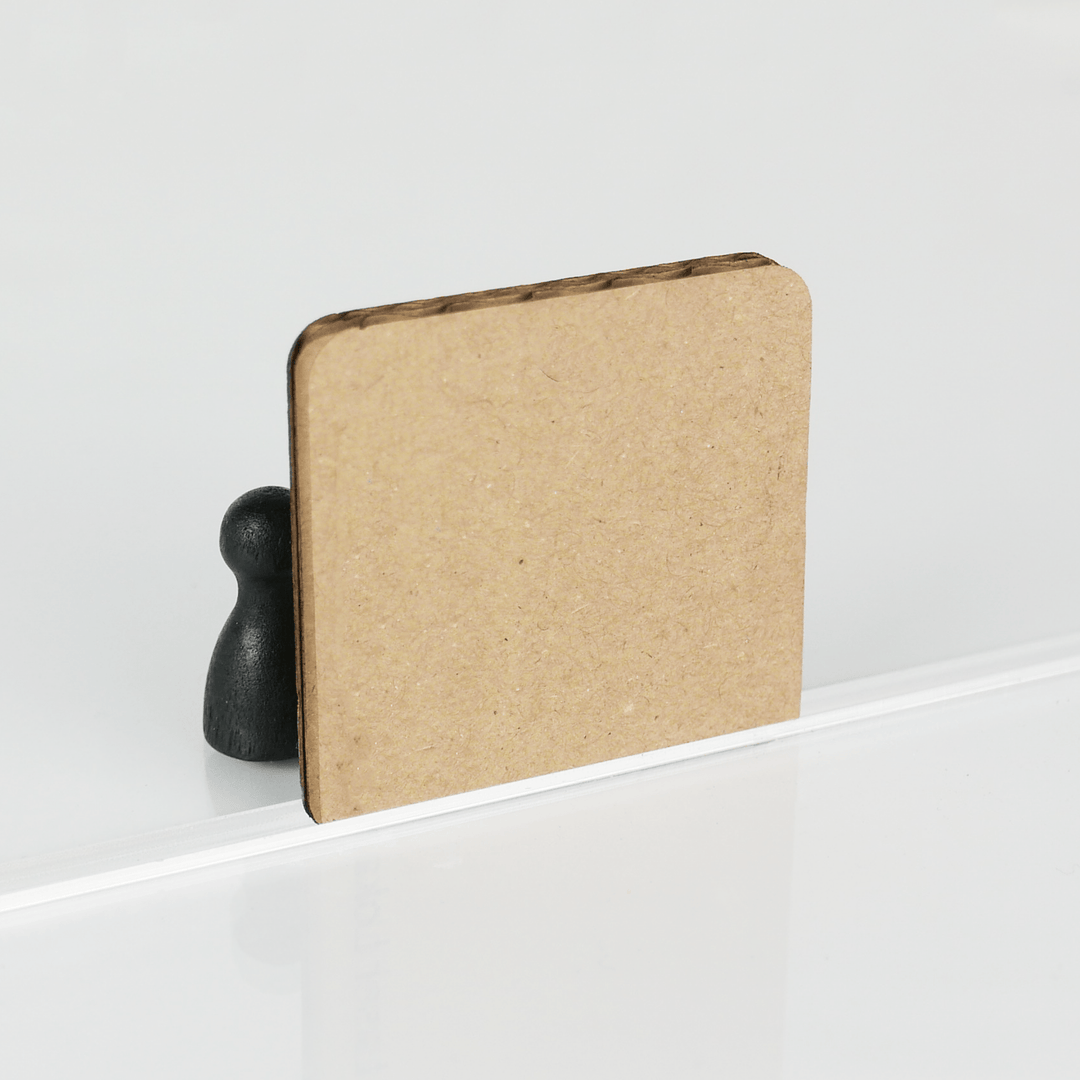Laser cutting of sustainable materials
At Het Laser Lokaal, we believe in the power of sustainable design. That's why we offer a growing range of eco-friendly materials that are perfectly suited for laser cutting. From innovative biobased panels to renewable resources and recycled fibers: sustainability is an integral part of our material policy. In this collection, we highlight four special materials that allow you to make sustainable choices without compromising on quality or workability: Biopanel, Fibernyl, bamboo, and recycled cardboard.
Biopanel: biobased sheet material from Dutch soil
Biopanel is a revolutionary biobased sheet material specifically developed as a sustainable alternative to traditional plastics such as PVC or acrylic. The material is composed of residual streams from Dutch agricultural crops, including fiber hemp, flax, and other natural cellulose sources.Thanks to this circular production process, Biopanel is CO₂-neutral and fully recyclable.
What makes Biopanel special is not only its origin but also its appearance. The material has a warm, fiber-rich structure that gives every creation a natural look. Additionally, it is surprisingly lightweight, making it suitable for applications where transport, ease of assembly, or weight reduction play a role.
In the laser cutter, Biopanel can be processed precisely and sharply. It cuts cleanly, without burning or fraying, and is very suitable for decorative panels, signage, displays, packaging, or prototypes with a sustainable appearance. It is also well-suited for laser engraving, where the fiber-rich surface allows for subtle textures.
Fibernyl: strong, flexible sheets made from hemp
Fibernyl is a sustainable sheet material based on hemp.Aesthetically, Fibernyl distinguishes itself with its unique fiber structure and characterful color variations, depending on the origin of the textile fibers used. Each sheet is visually unique – a feature that particularly appeals to designers, artists, and brands with a sustainable mission.
Fibernyl is excellently suited for laser cutting. The material can be cut into precise shapes like MDF or plywood, with a clean edge finish and minimal discoloration. Thanks to its flexibility and impact resistance, it is suitable for furniture, interior elements, wall panels, packaging, signage, and more. Especially in contexts where design, sustainability, and storytelling come together, Fibernyl is a logical choice.
Bamboo: renewable hardwood with a warm appearance
Bamboo is one of the fastest renewable resources in the world.Where traditional hardwood species take decades to grow, bamboo reaches full maturity in just five years. This makes it an extremely sustainable alternative for wood applications.
Bamboo panels are made from pressed strips or fibers of the bamboo stem and are available in various structures and shades, such as natural, caramel, or vertically pressed. Visually, bamboo offers a warm, luxurious appearance with a fine grain structure – favored in interior design, product development, and sustainable branding.
In our laser service, we process bamboo with high precision. The material cuts sharply and can also be engraved well for adding patterns, logos, or text. Thanks to its strength and dimensional stability, bamboo is highly suitable for functional and decorative objects, such as jewelry, displays, cardholders, wall decorations, or sustainable corporate gifts.
Moreover, bamboo is CO₂-positive: it absorbs more CO₂ during growth than it emits during production and processing. This makes it a favorite material for designers with an ecological focus.
Recycled cardboard: circular and versatile
Recycled cardboard is a classic in sustainable material use, but it continues to innovate. Cardboard made from recycled fibers is lightweight, budget-friendly, and fully circular. It is made from collected paper and cardboard waste that is reprocessed into sturdy sheets of various thicknesses.
For laser cutting, recycled cardboard is very suitable: it cuts quickly, cleanly, and with minimal burn marks. Thanks to its uniform structure, even complex patterns or small details are well achievable. Engraving provides subtle contrasts, especially with thicker variants or cardboard with a light brown tint.
Applications range from prototypes and packaging to educational materials, presentation models, or temporary decorations. Because the material is relatively inexpensive and environmentally friendly, many designers and educators consciously choose cardboard as the first step in their creation process.
Recycled cardboard is also ideal for series or tests: it stacks well, ships easily, and is simple to modify. Moreover, the material immediately conveys what it is: a conscious choice for simplicity, circularity, and environmental awareness.
Why choose sustainable materials for laser cutting?
The choice for sustainable materials goes beyond just the final product. It affects the entire chain: from raw material extraction to processing and waste management. By choosing materials like Biopanel, Fibernyl, bamboo, or recycled cardboard, you contribute to less CO₂ emissions, less waste, and more circular value creation.
Moreover, these materials are not only durable but also aesthetically appealing, technically reliable, and surprisingly versatile. They offer designers, artists, companies, and educational institutions the opportunity to innovate within the boundaries of sustainability. Whether you are creating a one-time prototype or developing a series of sustainable products, there is always an ecologically responsible alternative within reach.
At Het Laser Lokaal, we are happy to support you in this. Our machines and expertise are optimally tuned for processing these materials, ensuring you a professional end result with minimal waste.
Lees meer

